One of the neatest things about chickens is just how many fascinating breeds there are out there. No matter what kind of chickens you need, there is guaranteed to be a breed or 10 for the job.
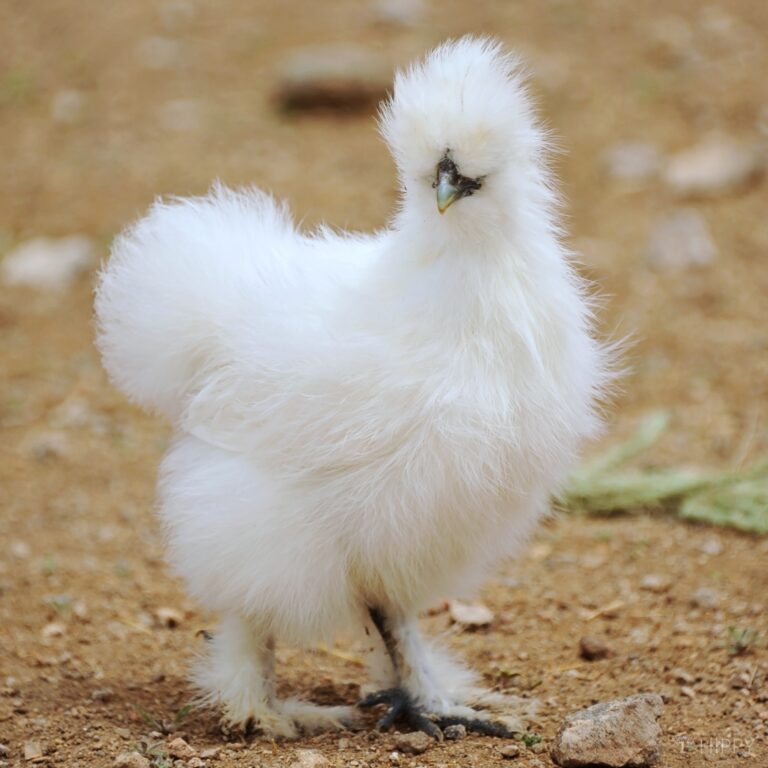
More than this, there is certain to be a breed that strikes your fancy! From tall, imperious and regal to diminutive and friendly, gold and red or speckled black, there are too many to count.
But if you like chickens with, shall we say, character then you have made your way to the right list. Below are chicken breeds with fabulous head plumage: crazy crests, bountiful beards, frizzy feathers, and more.
10 such breeds await discovery below, so if you are ready to add a new head-turner to your flock, read on.
1. Brabanter
An ancient breed hailing from the Netherlands, the Brabanter is notable for its regal colors and patterns, and also for its frankly amazing three-part crest: a frilly crown of feathers, a cape-like ruff that drapes down its neck and sides, and an additional sweep of curls beneath its chin.
The Brabanter is a true aristocrat in the chicken world, but it also has a sort of punk rock look. The tight, sharp spray of feathers on top of the head looks alternately like a mohawk or crewcut depending on the length!
Calm, dignified, tolerant of confinement and having hens known for laying straight through the winter, the Brabanter is a great choice if you’re looking for an eye-catching bird that is cold-adapted, and won’t get bent out of shape very often.
And even though they are slight of build, they still make pretty good table birds. But, be prepared to pay for these distinctive chickens, as they are still comparatively quite rare compared to eras past.
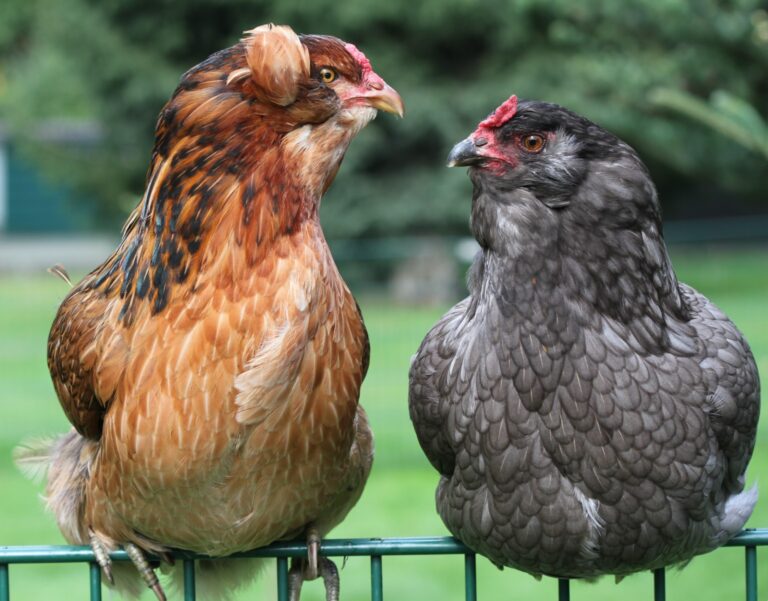
2. Araucana
The Araucana is best known for contributing its genes to the Easter Egger hybrid through the Ameraucana, and is also known for laying brightly colored blue and green eggs.
But what it’s equally well known for is its lavish head plumage, wild tufts of feathers that grow from the ears and look for all the world like an immense mustache or mutton chops.
Curiously, these tufts are not present in all Araucanas, and only manifest in 1/4 to 1/3 of all individual chickens. Nonetheless, they are quite a sight!
Araucanas are usually friendly, energetic, relatively slow layers, and typically broody, meaning they are excellent mothers if you want to expand your flock naturally. But, they can be troublesome, and only moderately productive if you want them for eggs.
Also, sadly, the hatch rate of Araucanas is pretty low, and many chicks won’t make it. This is something to be prepared for, no matter how in love with this breed you are.
3. Crevecoeur
The Crevecoeur chicken is another truly historic breed hailing from France, and since it is on this list you know it has some impressive head plumage.
Possessed of a huge, dense crest atop its head, it looks almost like a crown which is fitting for such a stoic and dignified bird. Dependable layers and large-bodied, these birds were traditionally bred and used for eggs and meat, though today they are kept for eggs and show usually.
This breed has suffered precipitous population loss in the 20th century, and is currently listed as “endangered” by United Nations FAO.
It was so bad after World War II, less than a 100 individual chickens were thought to remain. Accordingly, these precious birds are greatly desired and protected in equal measure.
If you are lucky enough to get one, you will have a real treasure on your hands.
4. Sultan
Sultan chickens really live up to their name: they are indeed the birds of royalty!
The Sultan chicken is a rare, elegant breed of chicken that originated from Turkey. Their original name, in the Turkish language, literally translates as “fowl of the palace.”
If you haven’t guessed by now, these chickens were always bred and kept for ornamental purposes, a practice that continues to this day.
The main characteristic that sets this bird apart from all its peers is its stunning plumage, with immense crests, large beards, long, flowing tails and frizzy feet. They really have it all!
These chickens are usually a bright, flawless white color, but this isn’t just any ordinary white; their feathers have an iridescent sheen that makes them shine in the sunlight.
These striking colors create an incredibly eye-catching bird that’s sure to attract attention wherever it may roam…
But when it comes to performance, they only place they impress is the show ring. Sultans are slow, low-volume layers of medium eggs, meaning they are not a good choice if you want plenty to go around.
They are, though, quite docile and easy to handle, meaning you can do a lot worse if you just want some lovely, ornamental birds. If you ever get the chance to add this breed to your flock you should take it as a unique opportunity, even though they don’t produce too well.
5. Houdan
The Houdan chicken is another striking and old French breed of chicken that’s highly sought-after by poultry aficionados and backyard keepers alike.
These birds are known for their exotic and uniquely colorful plumage, which sets them apart from other breeds, the defining features of which are its two-toned crest and muffs and beard, which result in an unusual but attractive appearance.
The crest is black on top with a silver or grey underside, while the muffle consists of black and white feathers in a V-shape pattern; a truly bold look to be sure!
Houdans are also another seriously endangered chicken breed, and today are primarily bred and kept by people who want them for show or to be appreciated and a fascinating historical breed.
But, if you want some use out of your Houdan, they are passable layers. Expect them to crank out about 150 medium white eggs per year, but not much more than that.
However, they typically lay through the winter and deal with confinement amicably, so if you want a cold-adapted breed with some awesome head and facial plumage they are worth seeking out.
These birds are also notably friendly and docile, meaning they are easy to handle, even for children and never prone to fight.
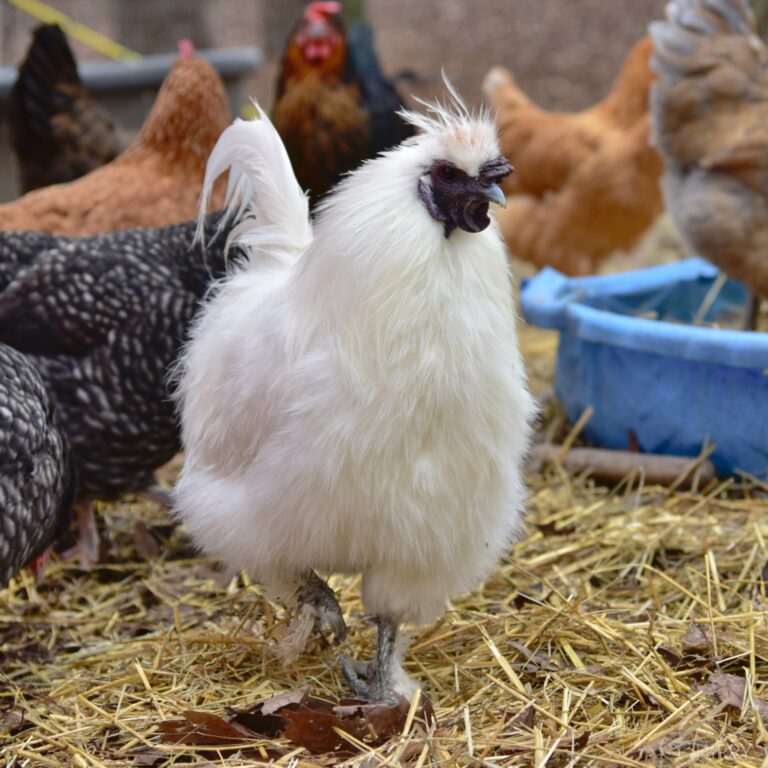
6. Silkie
You just knew the Silkie was going to be on this list somewhere! Silkies are famous for their exceptionally soft, fluffy feathers that feel more like fur than anything else.
This unique texture gives them the look of a small, feathered mammal when they strut around, and adds to their already incredible charm.
This fluffy plumage is all over their bodies, from beak to tail and top to bottom, and they commonly have large, fro-like plumes sprouting from their heads.
Since Silkies come in all sorts of colors, from black to gold, blue-laced red or partridge, you can end up with a bird that has a truly spectacular appearance.
But it isn’t all about looks with Silkies: though they don’t lay too many eggs per year, they are exceptionally good mothers (meaning broody!), to the point that they are often used as surrogates for other breeds.
They also make excellent pets, as they are extremely docile, affectionate birds that are very friendly and they tolerate handling well. Adding a Silkie to your flock will definitely bring it good looks and also provide you with plenty of entertainment and companionship.
7. Burmese
A bantam breed originally hailing from Burma, what we know as Myanmar today, the Burmese was thought to be totally extinct after the first two decades of the 20th century, but surviving individual birds were bred in England to “resuscitate” the breed.
The Burmese is another crested chicken, though it does not have the massive spray of feathers that some of its other crested cousins do.
Rather, their crest is a small but distinct tuft of feathers on top of their heads, almost like a flattop.
Along with their eye-catching crest, the Burmese also has long and densely feathered fringes on its legs, giving it a somewhat unbalanced but still charming aesthetic. Combined with their extra-long wing feathers that often brush the ground, the Burmese almost appears like it is wearing a cloak or gown.
Today, the Burmese breed is still beleaguered, and rare. Accordingly, they are not raised for anything except show or as pets.
Most eggs are incubated to help ensure maximum viability, and because they are seen as a true showbird most keepers won’t waste time with them.
However, these small birds are super affectionate and seem to love people, especially when raised from chicks.
This great attitude, together with their tiny stature, makes them wonderful companion birds, and truly excellent with children. If you want nothing more than some backyard buddies, the Burmese breed is an excellent choice.
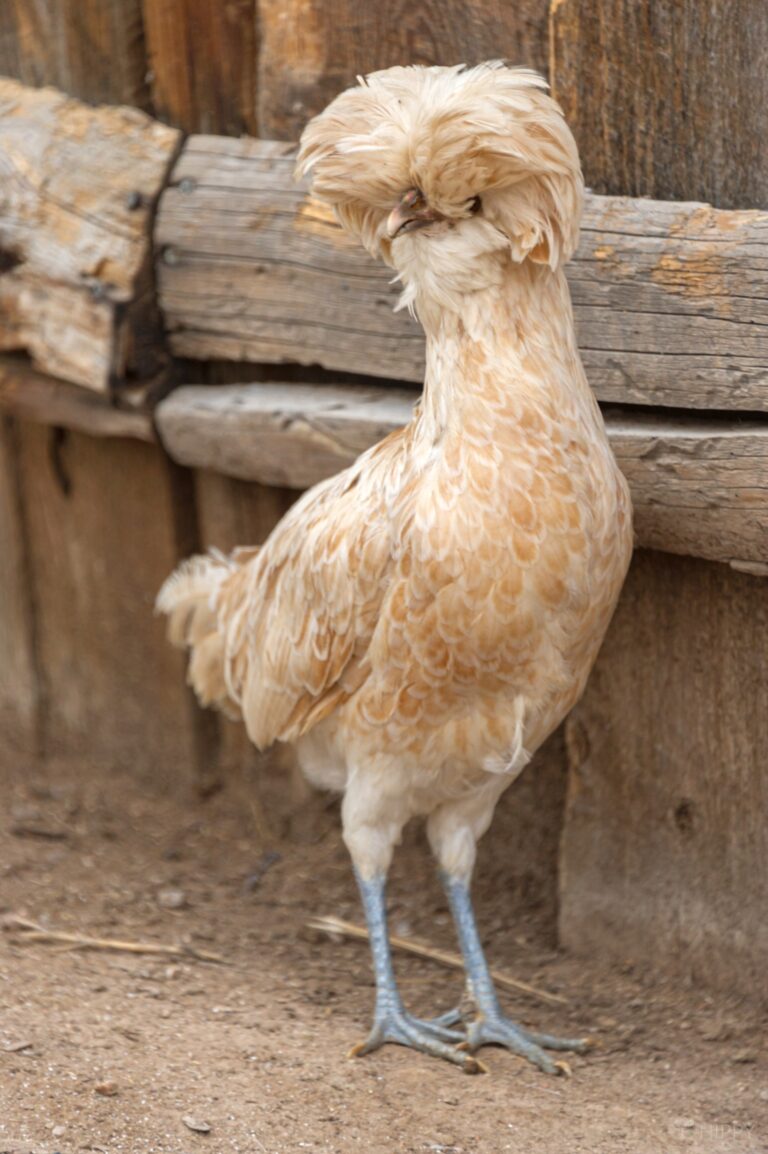
8. Polish
Truly one of the most magnificent of the crested chickens, few other breeds can rival the “mane” of these birds. A huge sweep of dense feathers covers all sides the Polish’s head, and often even extends down their neck.
These feathers are so dense and lengthy that they typically impede the poor bird’s vision. This has psychological implications; Polishes tend to be bit nervous and startle easily, and since they are also good fliers this means clipping wings or keeping them in a covered run is a must unless you want the fun of getting your prized bird down off of the roof or out of a tree.
So while they may be a bit spazzy, Polishes bring more than looks to your flock. They are solid if unreliable layers, with hens showing great variation in laying abilities.
Some produce barely 120 eggs a year while others crank out 200+. It just depends, and there is seemingly no rhyme or reason to this quirk. Polishes are also fairly small birds, and so are not ideally suited to be raised for meat.
Something else to keep in mind if you just really love Polishes and want to expand your flock is that they are not particularly broody, but that means they are poor mothers.
You won’t struggle to get eggs out of their nests but you’ll need to incubate fertilized eggs yourself since mothers won’t often sit on their eggs reliably.
9. Appenzeller Spitzhauben
A Swiss breed, though not one officially recognized by the APA, the Appenzeller Spitzhauben is my very favorite chicken on this list. Seriously, just look at them!
Incredibly athletic, with beautiful picturesque plumage, and topped by a reserved but spiky crest, these chickens just look right! They are also notable for possessing a forked or “devil” comb which splits in front of the crest, making them even more exotic looking.
If sheet beauty is what you are after, I don’t think you can do any better than the Appenzeller Spitzhauben- at least in my totally unbiased opinion…
But what can these lovelies do for you? Are they just show birds?
No: Appenzeller Spitzhaubens are modest layers and a few hens can easily keep a family in eggs all year long, usually laying between 170 and 200. More good news is that these chickens are cold hardy, and will lay all winter long.
Hens are moderately broody, and excellent mothers when they do decide to hatch their eggs, so you can depend on them to increase the size of your flock naturally. Also, despite their cold preference, they don’t seem to struggle in the heat like some other crested breeds with denser feathers.
Appenzeller Spitzhaubens are also super alert and energetic birds. They love to forage and explore, are keen against predators, and can typically take care of themselves despite their slight build, though you should also know they are quite capable fliers.
One common anecdote from owners is that of their birds happily roosting in trees during blistering-cold weather, seemingly oblivious to the bad conditions!
Though they are skittish and sometimes standoffish, when raised from chicks and interacted with regularly they tend to be friendly and get along fine with people. Extraordinary good looks, free spirits and capable egg layers; what is not to love?
10. Pavlovskaya
Another ancient breed, this time from Russia (or at least first documented in Russia), the Pavlovskaya is notable for extreme cold hardiness and a tufted, sprouting crest similar to the Appenzeller Spitzhauben above.
Once thought totally extinct, the breed has made a comeback in Russia but is still almost totally unknown in the west. What few farms that do hatch them usually produce less than 100 viable chicks a year.
The only reason to own one of these fascinating birds is if you have a special interest in the breed, or want to assist with conservancy. Hens lay maybe 60 eggs per year, and raising these rare and precious birds for meat is almost unthinkable.
Even so, they tend to be very calm and docile, so their interactions with friendly humans are pleasant.
As mentioned, they are quite cold hardy, and trend towards being quite healthy. They are not edgy or nervous as a rule, but they still like plenty of room to move around, more than other sedate breeds.
Also notably, they do not tolerate confinement for extended periods well at all. If you want to keep Pavlovskayas make sure you invest in an oversized coop and run despite their modest size.
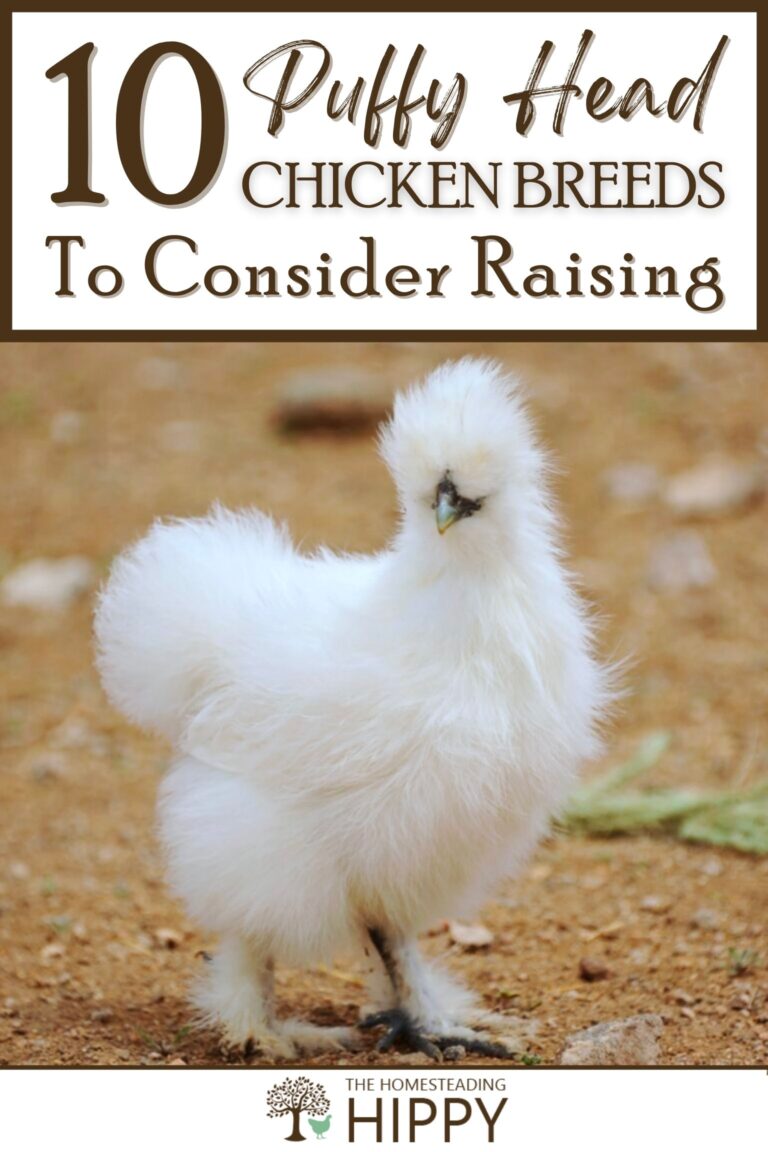
Tim is a farm boy with vast experience on homesteads, and with survival and prepping. He lives a self-reliant lifestyle along with his aging mother in a quiet and very conservative little town in Ohio. He teaches folks about security, prepping and self-sufficiency not just through his witty writing, but also in person.
Find out more about Tim and the rest of the crew here.
